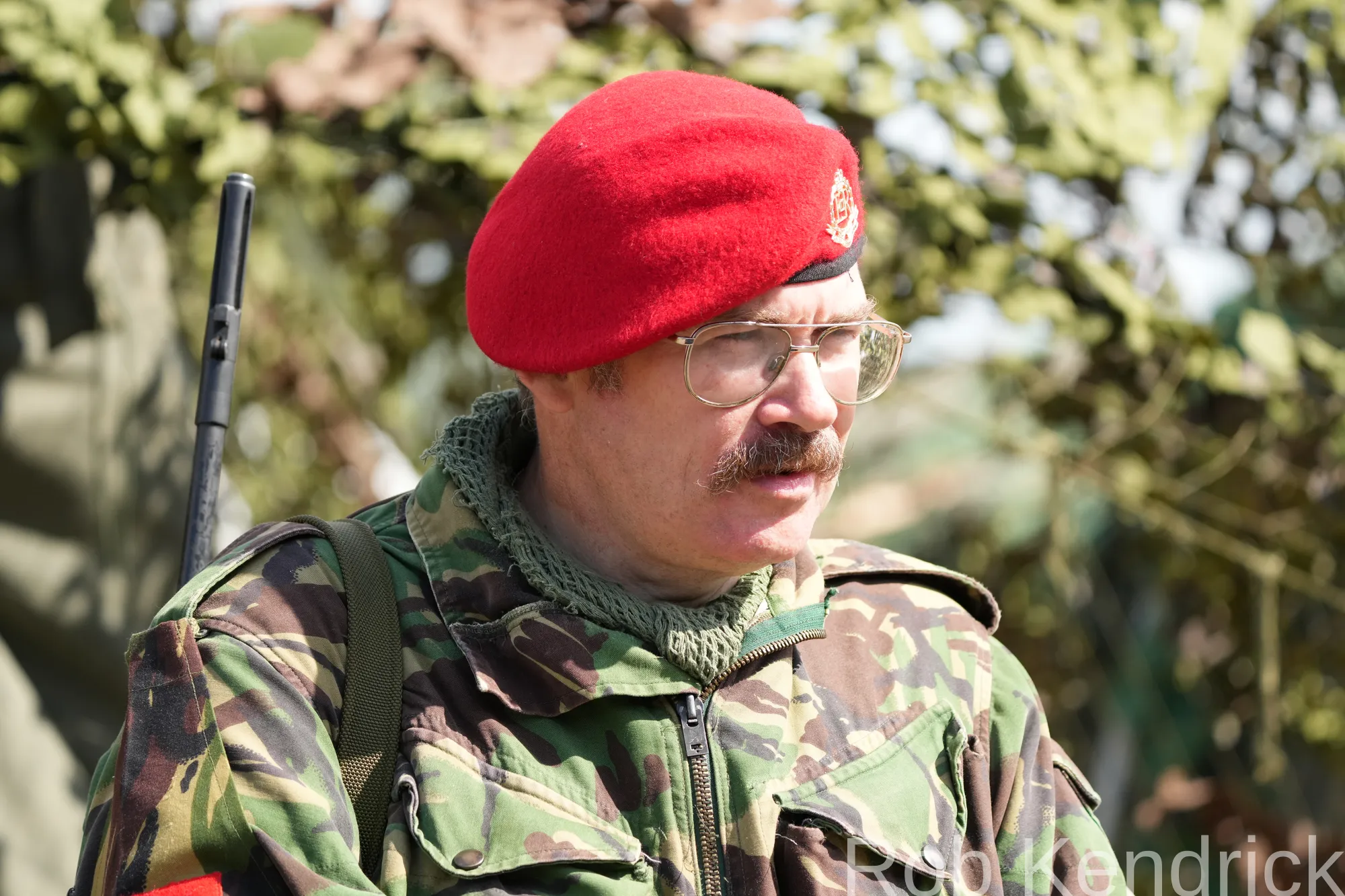Imagine taking a step back in time and experiencing the tension, espionage, and technological advancements of the Cold War era. That's precisely what East Meets West does - an accomplished and highly regarded living history group that brings the Cold War to life, portraying both Eastern and Western forces between 1975 to 1985.

With a wealth of knowledge and expertise, the members of East Meets West are passionate about sharing their insights with the public. They excel at making history accessible, educational, and entertaining, captivating audiences of all ages with their engaging reenactments and demonstrations.
Their work has been well-received by veterans and the general public alike, and it's no surprise that younger generations are also showing interest in this fascinating period in history. With the Cold War now a staple of the school curriculum, East Meets West is a sought-after resource for educators and students, helping to bring the past to life and make it relevant to the present. So why not join them on their journey back in time and witness history in the making?
The Cold War was a period of political and military tension that lasted for several decades, from the end of World War II in 1945 until the collapse of the Soviet Union in 1991. It was called the "Cold" War because it did not involve direct military conflict between the two main superpowers, the United States and the Soviet Union, but instead was characterized by a state of hostility, rivalry, and competition between them.
During the Cold War, the two superpowers engaged in an arms race, a competition to develop more powerful and destructive weapons, including nuclear weapons. They also engaged in espionage, propaganda, and proxy wars in different parts of the world, each trying to spread their political and economic influence and to prevent the other from doing the same.
The Cold War had a profound impact on international relations and world history, shaping the political, economic, and social landscape of the world we live in today.
The Warsaw Pact was a military alliance formed by the Soviet Union and several Eastern European countries in response to the establishment of NATO (North Atlantic Treaty Organization) by Western European countries and the United States during the Cold War.
The Warsaw Pact was signed in 1955 and included the Soviet Union, Albania, Bulgaria, Czechoslovakia, East Germany, Hungary, Poland, and Romania. The treaty provided for collective defense, with the member countries agreeing to come to each other's aid in case of an attack by an outside power.
The Warsaw Pact remained in effect until 1991, when the collapse of the Soviet Union led to the dissolution of the alliance. Many of the former Warsaw Pact countries subsequently joined NATO and the European Union, signaling a shift towards closer ties with the West.
NATO (North Atlantic Treaty Organization) was a military alliance formed in 1949 by Western European countries and the United States during the Cold War. The alliance was established in response to the perceived threat posed by the Soviet Union and its allies in Eastern Europe.
The founding members of NATO were the United States, Canada, and ten Western European countries, including the United Kingdom, France, and West Germany. The alliance was based on the principle of collective defense, with member countries agreeing to come to each other's aid in case of an attack by an outside power.
During the Cold War, NATO played a critical role in containing the Soviet Union and its allies in Eastern Europe. It acted as a deterrent against potential Soviet aggression, with the US providing a nuclear umbrella for its European allies. NATO also engaged in military exercises and built up its military presence in Western Europe to show its readiness to respond to any Soviet threat.
NATO's role during the Cold War evolved over time, and it became a key instrument of Western foreign policy in the post-war era. Since the end of the Cold War, NATO has expanded its membership and taken on new roles, including peacekeeping and counterterrorism operations. Today, NATO remains an important transatlantic security alliance, committed to collective defense and promoting stability and security in Europe and beyond.
